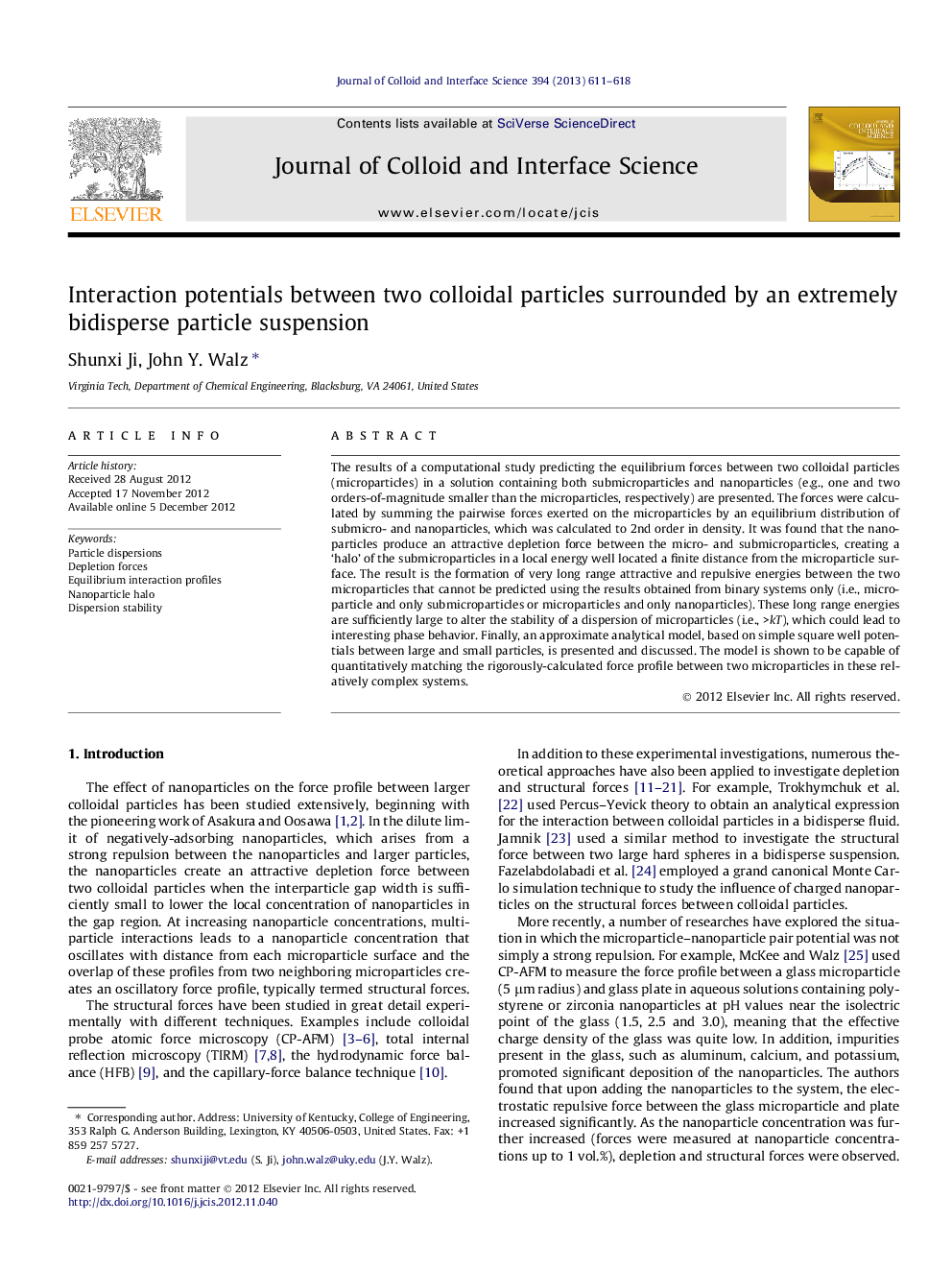| Article ID | Journal | Published Year | Pages | File Type |
|---|---|---|---|---|
| 607814 | Journal of Colloid and Interface Science | 2013 | 8 Pages |
The results of a computational study predicting the equilibrium forces between two colloidal particles (microparticles) in a solution containing both submicroparticles and nanoparticles (e.g., one and two orders-of-magnitude smaller than the microparticles, respectively) are presented. The forces were calculated by summing the pairwise forces exerted on the microparticles by an equilibrium distribution of submicro- and nanoparticles, which was calculated to 2nd order in density. It was found that the nanoparticles produce an attractive depletion force between the micro- and submicroparticles, creating a ‘halo’ of the submicroparticles in a local energy well located a finite distance from the microparticle surface. The result is the formation of very long range attractive and repulsive energies between the two microparticles that cannot be predicted using the results obtained from binary systems only (i.e., microparticle and only submicroparticles or microparticles and only nanoparticles). These long range energies are sufficiently large to alter the stability of a dispersion of microparticles (i.e., >kT), which could lead to interesting phase behavior. Finally, an approximate analytical model, based on simple square well potentials between large and small particles, is presented and discussed. The model is shown to be capable of quantitatively matching the rigorously-calculated force profile between two microparticles in these relatively complex systems.
Graphical abstractFigure optionsDownload full-size imageDownload high-quality image (77 K)Download as PowerPoint slideHighlights► Interaction potential between two microparticles in bidisperse suspension is predicted. ► System consists of microparticles, submicroparticles and nanoparticles. ► Depletion forces create net attraction between the submicroparticles and microparticles. ► Interaction in bidisperse system fundamentally different from that in monodisperse systems. ► Long range features of interaction profile could lead to interesting phase behavior.
